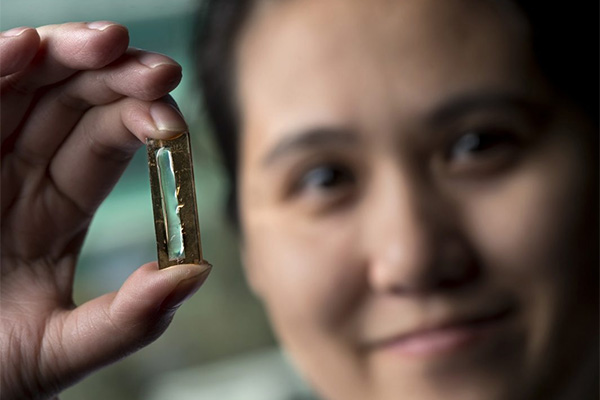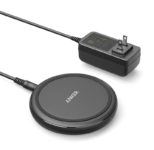
Batteries of the Future – What Will They Be
If I were asked to find one word to describe our civilization, my choice would be ‘charge’. Not in the sense of ‘responsibility’, but in the sense of ‘power charge’. We are people who have now become so dependent on batteries and power charges, that we feel uneasy not having a charging source on us at all time. It has become such a dependence that a portable battery pack has taken place of an extra pen even in our bags.
Our batteries are very strong and vigorous, but they also tend to run out of power quickly and are highly flammable. It’s the price we pay for being mobile and autonomous. I stumbled upon this problem when my boss asked me to write something about hoverboards catching fire. As you know, this transport is banned from mailing and selling in the U.S. because they proved to be highly flammable. But the list of hazardous gadgets is much longer than that. Smartphones, rechargeable headphones, notebooks and tablets can potentially turn into little bombs.
The reason behind why they are flammable all comes down to the batteries. You might have noticed that your handheld device sometimes heats up when you excessively use it. That’s why most manufacturers choose aluminum cases for their devices. Aluminum is a good heat conductor and radiates the excessive heat into the air. Yet, the most critical downfall of modern batteries is not the flammability but the short charge life cycle. Touch screens consume too much energy, let alone music and video playbacks. We are constantly having to recharge our batteries again and again causing to shorten their life. As a result, the battery can’t keep the charge anymore and needs to be either replaced or ditched altogether with the device it powers.
So, in a nutshell, we are in need of cool and capacious batteries. We also want them to be long-lived and to come in any shape and size. Is there any hope for this? Let’s take a look.
There are several venues that researchers are now pursuing: improvement of the existing charging elements, development of new charging materials and discovering the completely new physical principles of producing and storing energy.
If you take a glass, fill it with water, add some salt to it and put two wires in it, you’ll get an approximate model of a battery. Its conception hasn’t changed much over the past fifty years. The ‘water’ in the battery is lithium salts electrolyte and the wires are the positive and negative electrodes. The positive one is made of steel and copper while the negative one is made of graphite. A group of researchers are seeking a way to replace the materials the electrolyte and the electrodes are made of.
For instance, graphite can be replaced with the recently discovered graphene while copper – with gold. Researcher Mya Le Thai from the University of California in Irvine implemented golden nanowires, which are a thousand times thinner than a human hair. Gold is a very soft metal and with it being so thin, the wires break down after several charges. But after the scientists had coated the gold nanowires in manganese dioxide shells the battery survived 200,000 charging cycles and showed no signs of degradation. In everyday life it means you can use your phone and even your electric car for years and years without replacing the battery.

Nanowire
UCI doctoral candidate Mya Le Thai has developed a nanowire-based technology that allows lithium-ion batteries to be recharged hundreds of thousands of times. Steve Zylius / UCI
Gold is not the only option. Other groups of researchers offer silicone for a negative electrode and magnesium for a positive one. Yet, the magnesium electrode is eaten up with every next recharge and this issue hasn’t been sold yet.
There are also attempts to replace the high-toxic lithium electrolyte. For instance, the Aquion company, founded by Professor Jay Whitacre, was able to replace it with salt water. Sadly enough, the batteries didn’t take off.
The real breakthrough is replacing the electrolyte with some kind of solid material. The issue is to find a solid material in which the ions will be moving as freely as they do in liquid. The solid batteries will be much faster to charge, fire safe and will live much longer. The industry is quite optimistic about getting these power sources soon, because research is backed up by major car making companies- Toyota and BMW. Researchers from Toyota are promising, it will take just seven minutes to fully charge the car’s battery soon.
The Ambri company founded by MIT professor Donald Sadoway is pursuing the opposite goal: molten metal batteries. A molten metal battery looks like a steel shoe box that houses two pools of metal for electrodes and a layer of molten metal salt between them. The exact metals implemented into the device are kept secret but Sadoway revealed, he was experimenting with tin, lithium and calcium.
The Ambri batteries are non-toxic, fire-safe and cheap to make. Ambri has already constructed a 432-cell, 20-kilowatt-hour working prototype at their facility in Marlborough. This battery is the size of a shipping container, and is able to supply 30 average Massachusetts homes with electricity. Bill Gates and the giant French energy company Total didn’t invest $50 million for nothing.
The molten metal batteries can’t meet the demands of the wearables market though. It would be great to have thin and flexible power sources installed into smartphones, foldable tablets and smart clothes as well.
The Jenax company has introduced the flexible lithium polymer battery (jenaxinc.com/product/batteries). This company specializes in conductive yarns and textiles managing to make a sheet of battery, using the polymer gel as the electrolyte. The ad videos and pictures feature 10, 000 dynamic bends that the battery survived.
Obviously the greatest roadblock in progress…are the materials. We haven’t discovered or invented a material yet that can replace those used in the industry today. Some enthusiasts suggest to put the electrodes in plants, or soil… or to even go as far as rubbing the batteries against human skin. But lining up dozens of flowering pots or rubbing one’s wrist raw is not the answer.






Facebook
Twitter
RSS